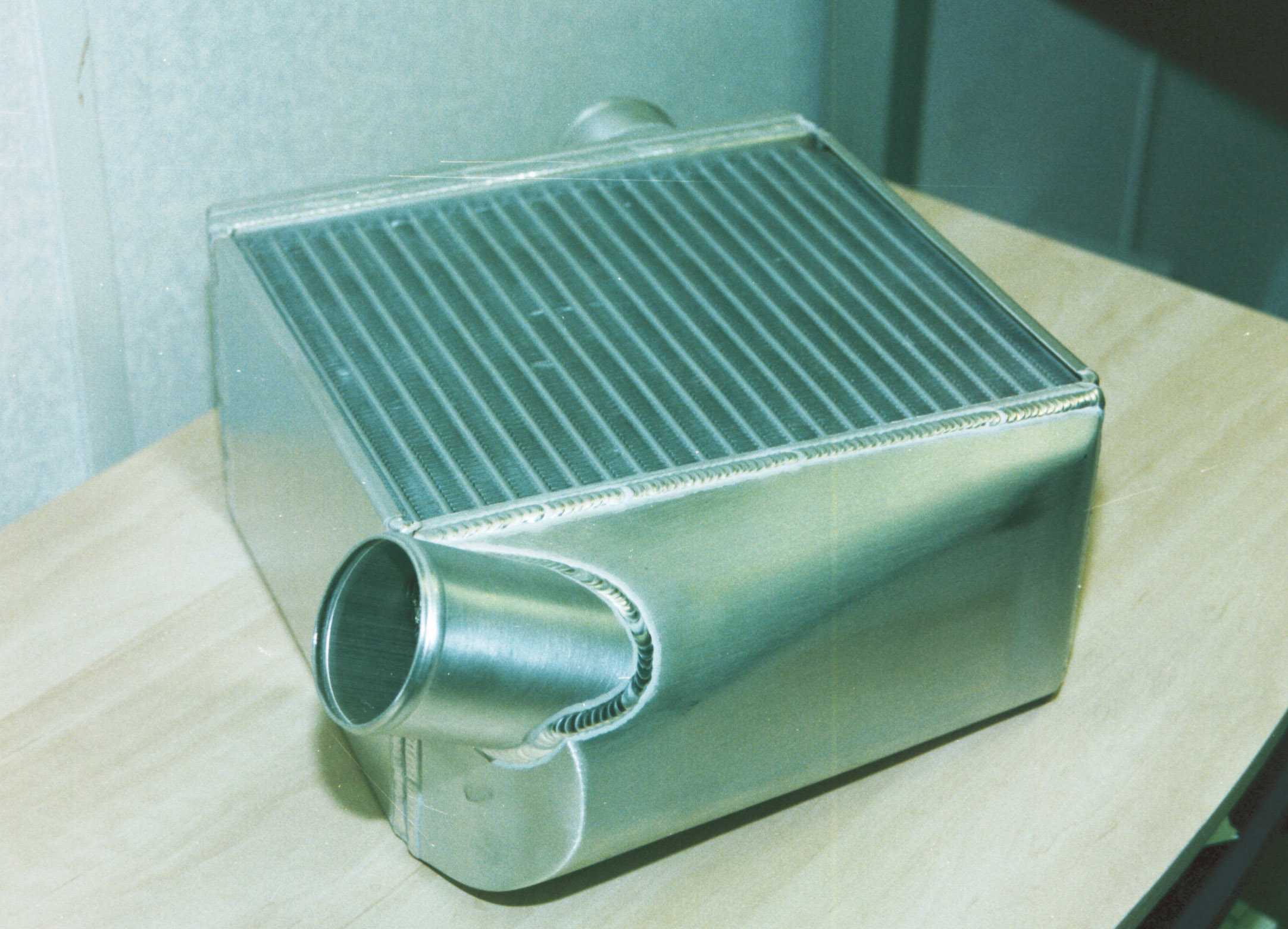The aftercooler
It is an inescapable fact that pressure charging the intake air of an internal combustion engine invariably increases the temperature of that charge. The degree to which the temperature increases is essentially a function of the type of compression that takes place (adiabatic, isothermal) and therefore the efficiency of the compressor. The turbocharger, with its centrifugal compressor, accelerates the charge very quickly and then diffuses it slightly slower to convert the velocity energy into that of pressure.
But even with adiabatic efficiencies of up to 80% or more on some of the better compressor wheels, the charge temperature can increase significantly to the point where compressor outlet temperatures of the order of 200 C are not uncommon. While part-load fuel efficiency might be impressive at these temperatures, engine performance in terms of raw power is certainly not. Consequently, to compensate for these high charge temperatures, the most obvious solution is to install an aftercooler (commonly known as an intercooler) which, by cooling the intake charge, has more advantages than we might think.
First and perhaps most obvious, in keeping charge air temperatures low the air density will be greater, allowing more air to enter the cylinder. The greater the density of the incoming air, the greater amount of air trapped in the cylinder. Important at all engine speeds and loads, at high engine loads a temperature drop of even 30 C can increase the engine charge air density by around 10% with, all things being equal, a similar increase in power output. In gasoline engines, not only is the power increased because of the increased charge density but the engine’s sensitivity to combustion ‘knock’ or detonation may also be reduced, enabling possibly greater ignition advance and therefore even more engine power. Likewise, in diesel units when operating near the smoke limit at high load and low speed, the black smoke produced through incomplete combustion will be significantly reduced, enabling slightly more fuel to be ingested and greater low-speed performance.
But the introduction of the aftercooler doesn’t just lower the inlet charge temperature, the combustion temperature and the exhaust gas temperature will also be lower. A reduction of, say, 50 C at the inlet valve will most likely see a similar reduction in the exhaust gas temperature, with the possible benefits to the quality of the exhaust valve material required and its durability. The opportunity to use a lower quality material could therefore be examined. If you like, including an aftercooler could therefore save you an awful lot of money on exotic valve materials
But including an aftercooler means extra weight and greater induction system volume, leading to transient control issues and the obvious extra complexity of installing it into the vehicle. Is it all really worth it? That particular conundrum is, in addition to the increased performance delivered, also down to a parameter known as the effectiveness of the device. Defined as the ratio of the actual heat transfer as a fraction of the maximum possible heat transfer, the recovery of the charge density through the aftercooler is quite an important feature, and one that not only encompasses its design but also its installation.
To be highly effective, the aftercooler will need to be positioned close to the extremity of the bodywork, introducing large manifold volumes and accentuating the infamous ‘turbo lag’. Alternately, a larger unit in a less ideal environment could have the same thermal effectiveness but being nearer to the engine, the manifold volume would be reduced. The size and weight of the cooler might be increased, but that might be offset by the reduced weight of the hoses and so on. In essence you pay your money and, well, you fit it in the most optimum place you can find!
Installing an aftercooler might at first seem a simple undertaking, but to get it right takes a lot of effort and understanding.
 Fig. 1 - An aluminium aftercooler
Fig. 1 - An aluminium aftercooler
Written by John Coxon